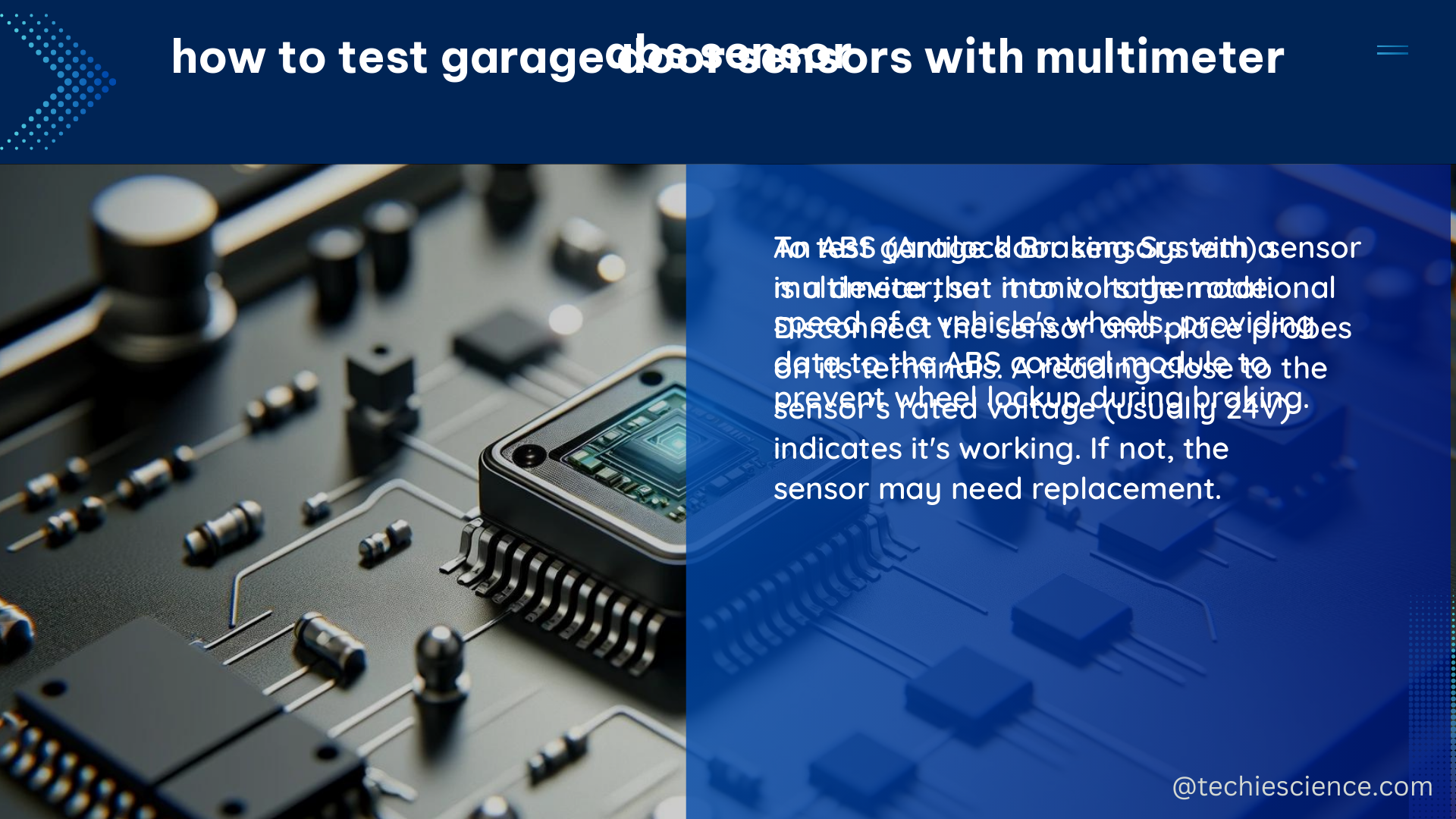The ABS (Anti-lock Braking System) sensor, also known as the wheel speed sensor, is a critical component in modern vehicles, playing a pivotal role in driving assistance systems such as ABS, TCS, ESP, and ACC. These sensors detect the rotational speed of each wheel and provide this information to various vehicle systems, enabling enhanced driving dynamics, safety, comfort, fuel efficiency, and emissions control.
Understanding ABS Sensor Types: Active vs. Passive
ABS sensors can be classified into two main types based on their operation: active and passive.
Active ABS Sensors
Active ABS sensors generate their own power supply and continuously transmit a signal. These sensors typically use a Hall effect or magnetoresistive principle, where a magnetic field is generated, and the sensor detects changes in the magnetic field as the wheel rotates. Active sensors are known for their high accuracy, reliability, and ability to provide a continuous signal, making them well-suited for applications that require precise wheel speed monitoring.
Passive ABS Sensors
Passive ABS sensors, on the other hand, rely on an external power source and only generate a signal when there is a change in the magnetic field. These sensors often utilize an inductive principle, where a toothed wheel or reluctor ring is used to create a fluctuating magnetic field that induces a voltage in the sensor. Passive sensors are generally less complex and more cost-effective, but they may be more susceptible to environmental factors and provide a less continuous signal.
Technical Specifications of ABS Sensors

The technical specifications of ABS sensors are crucial for ensuring optimal performance and compatibility with the vehicle’s systems. Let’s dive into the key parameters:
Transducer Type
ABS sensors employ a wide range of transducer and signal transformation approaches, each with its own technical complexity. Common transducer types include:
– Hall effect sensors
– Magnetoresistive sensors
– Inductive sensors
– Variable reluctance sensors
The choice of transducer type depends on factors such as cost, accuracy, reliability, and the specific requirements of the application.
Interfering Inputs
ABS sensors can be affected by various interfering inputs, with temperature being a common example. Temperature changes can alter the zero-bias of the sensor, leading to potential inaccuracies in the wheel speed measurement. Manufacturers often provide temperature compensation or calibration techniques to mitigate these effects.
Hysteresis
Hysteresis is a phenomenon where the output of a sensor may differ for the same input, depending on whether the input is increasing or decreasing. This can be caused by mechanical or electrical factors within the sensor. Hysteresis is typically quantified as the difference in output between the rising and falling signals.
Resolution
Resolution, also known as discrimination, refers to the smallest increment of the measured parameter (in this case, wheel speed) that can cause a detectable change in the sensor’s output. The resolution of modern ABS sensors varies widely, and it is essential to understand the required resolution for a specific application before selecting a sensor.
Accuracy
Accuracy describes a sensor’s ability to provide an output close to the true value of the measured parameter. It is typically expressed as the maximum expected error between the actual and ideal output signals, often relative to the sensor’s full-scale span.
Precision
Precision is sometimes confused with accuracy, but it is a distinct concept. Precision refers to the repeatability or consistency of the sensor’s output for a given input, rather than its closeness to the true value. Achieving high precision is crucial for applications that require consistent and reliable measurements.
Selecting the Right ABS Sensor
When choosing an ABS sensor for a specific application, it is essential to consider the technical specifications and ensure they align with the vehicle’s requirements. Factors such as the sensor’s transducer type, interfering inputs, hysteresis, resolution, accuracy, and precision should be carefully evaluated to ensure optimal performance and compatibility.
Additionally, it is important to follow the manufacturer’s recommendations and guidelines for sensor installation, calibration, and maintenance to maintain the sensor’s functionality and prevent potential issues.
Conclusion
ABS sensors are indispensable components in modern vehicles, playing a crucial role in driving assistance systems and overall vehicle performance. Understanding the technical specifications and characteristics of these sensors is crucial for selecting the right sensor, ensuring optimal vehicle performance, and maintaining driving safety and comfort.
By delving into the details of ABS sensor types, transducer principles, and key technical parameters, this comprehensive guide provides a valuable resource for automotive professionals, DIY enthusiasts, and anyone interested in the intricacies of wheel speed detection and vehicle dynamics.
References
- The Digital Twin: The Benefits of Taking An Incremental Journey. (2020-11-03). Retrieved from https://maritime-executive.com/editorials/the-digital-twin-the-benefits-of-taking-an-incremental-journey
- Sensing and Sensor Fundamentals. (2014-01-04). Retrieved from https://link.springer.com/chapter/10.1007/978-1-4302-6014-1_2
- Check and change ABS sensor – HELLA. Retrieved from https://www.hella.com/techworld/us/Technical/Sensors-and-actuators/Check-change-ABS-sensor-4074/

The lambdageeks.com Core SME Team is a group of experienced subject matter experts from diverse scientific and technical fields including Physics, Chemistry, Technology,Electronics & Electrical Engineering, Automotive, Mechanical Engineering. Our team collaborates to create high-quality, well-researched articles on a wide range of science and technology topics for the lambdageeks.com website.
All Our Senior SME are having more than 7 Years of experience in the respective fields . They are either Working Industry Professionals or assocaited With different Universities. Refer Our Authors Page to get to know About our Core SMEs.